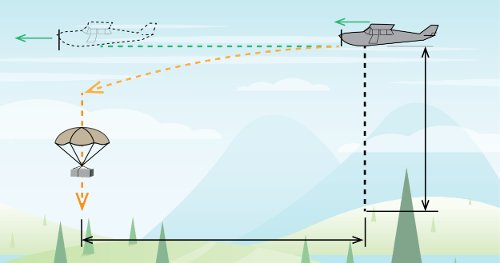[EKSU, Ado-Ekiti] ENG 234: Engineering Mechanics II (Dynamics)
159 hrs
Learning Track Courses
 Kinematics of Particles - Engineering Mechanics (Dynamics)Do you want to learn how to describe and analyze the motion of particles in one and two dimensions?
Do you want to apply your knowledge of kinematics to solve real-world problems in engineering, physics, and sports?
Do you want to master the use of different coordinate systems and reference frames to simplify your calculations and enhance your understanding?
If you answered yes to any of these questions, then this course is for you!
Engineering Mechanics: Kinematics of Particles comprehensively addresses the fundamental concepts and principles of particle kinematics. You will learn how to:
- Define and measure the position, velocity, and acceleration of a particle moving along a straight or curved path.
- Use various methods to determine the motion of a particle, such as equations of motion, graphical solutions, and numerical solutions.
- Apply the concepts of relative and dependent motion to analyze the motion of several particles or connected bodies.
- Choose the most suitable coordinate system for a given problem, such as rectangular, polar, normal-tangential, or radial-transverse coordinates.
- Understand the effects of different reference frames on the observed motion of a particle, such as inertial, non-inertial, or rotating frames.
By the end of this course, you will have a solid foundation in particle kinematics that will enable you to tackle more advanced topics in dynamics, mechanics, and other fields of engineering and science. You will also have the skills and confidence to apply your knowledge to real-world situations, such as the trajectory of a snowboarder, the orbital speed of a satellite, or the accelerations during acrobatic flying.
This course is designed for students, engineers, and enthusiasts who have a basic background in calculus, physics, and vector algebra.
Once enrolled, you have access to dynamic video lessons, interactive quizzes, and live chat support for an immersive learning experience. You engage with clear video explanations, test your understanding with instant-feedback quizzes and interact with our expert instructor and peers in the chat room. Join a supportive learning community to exchange ideas, ask questions, and collaborate with peers as you master the material, by enrolling right away.
Kinematics of Particles - Engineering Mechanics (Dynamics)Do you want to learn how to describe and analyze the motion of particles in one and two dimensions?
Do you want to apply your knowledge of kinematics to solve real-world problems in engineering, physics, and sports?
Do you want to master the use of different coordinate systems and reference frames to simplify your calculations and enhance your understanding?
If you answered yes to any of these questions, then this course is for you!
Engineering Mechanics: Kinematics of Particles comprehensively addresses the fundamental concepts and principles of particle kinematics. You will learn how to:
- Define and measure the position, velocity, and acceleration of a particle moving along a straight or curved path.
- Use various methods to determine the motion of a particle, such as equations of motion, graphical solutions, and numerical solutions.
- Apply the concepts of relative and dependent motion to analyze the motion of several particles or connected bodies.
- Choose the most suitable coordinate system for a given problem, such as rectangular, polar, normal-tangential, or radial-transverse coordinates.
- Understand the effects of different reference frames on the observed motion of a particle, such as inertial, non-inertial, or rotating frames.
By the end of this course, you will have a solid foundation in particle kinematics that will enable you to tackle more advanced topics in dynamics, mechanics, and other fields of engineering and science. You will also have the skills and confidence to apply your knowledge to real-world situations, such as the trajectory of a snowboarder, the orbital speed of a satellite, or the accelerations during acrobatic flying.
This course is designed for students, engineers, and enthusiasts who have a basic background in calculus, physics, and vector algebra.
Once enrolled, you have access to dynamic video lessons, interactive quizzes, and live chat support for an immersive learning experience. You engage with clear video explanations, test your understanding with instant-feedback quizzes and interact with our expert instructor and peers in the chat room. Join a supportive learning community to exchange ideas, ask questions, and collaborate with peers as you master the material, by enrolling right away.
Do you want to learn how to describe and analyze the motion of particles in one and two dimensions? Do you want to apply your knowledge of kinematics to solve real-world problems in engineering, physics, and sports? Do you want to master the use of different coordinate systems and reference frames to simplify your calculations and enhance your understanding? If you answered yes to any of these questions, then this course is for you! Engineering Mechanics: Kinematics of Particles comprehensively addresses the fundamental concepts and principles of particle kinematics. You will learn how to: - Define and measure the position, velocity, and acceleration of a particle moving along a straight or curved path. - Use various methods to determine the motion of a particle, such as equations of motion, graphical solutions, and numerical solutions. - Apply the concepts of relative and dependent motion to analyze the motion of several particles or connected bodies. - Choose the most suitable coordinate system for a given problem, such as rectangular, polar, normal-tangential, or radial-transverse coordinates. - Understand the effects of different reference frames on the observed motion of a particle, such as inertial, non-inertial, or rotating frames. By the end of this course, you will have a solid foundation in particle kinematics that will enable you to tackle more advanced topics in dynamics, mechanics, and other fields of engineering and science. You will also have the skills and confidence to apply your knowledge to real-world situations, such as the trajectory of a snowboarder, the orbital speed of a satellite, or the accelerations during acrobatic flying. This course is designed for students, engineers, and enthusiasts who have a basic background in calculus, physics, and vector algebra. Once enrolled, you have access to dynamic video lessons, interactive quizzes, and live chat support for an immersive learning experience. You engage with clear video explanations, test your understanding with instant-feedback quizzes and interact with our expert instructor and peers in the chat room. Join a supportive learning community to exchange ideas, ask questions, and collaborate with peers as you master the material, by enrolling right away.
 Kinetics of Particles by Newton's Second Law - Engineering Mechanics (Dynamics)This course will equip you with the skills and knowledge to tackle various engineering and scientific problems involving kinetics of particles, which is the branch of mechanics that deals with the relation between the forces acting on a particle and its resulting motion. From the basics of mechanics, dynamics, and kinetics to getting comfortable with Newton's second law and momentum methods, you will clearly understand how forces cause motion.
Boost your problem-solving skills and open up new career opportunities in fields like aerospace engineering, mechanical engineering, civil engineering, biomedical engineering, physics, chemistry, and more. Imagine being able to predict how a ball flies through the air, or understanding why a car behaves the way it does in a crash. This course helps you do these and many more!
By the end of this course, you will be able to:
- Explain the fundamentals of mechanics, dynamics, and kinetics
- Use Newton's second law to analyze how forces make bodies speed up or slow down
- Learn about energy, how forces do work, and how these relate to motion of bodies
- Figure out how collisions work and what motion happens before and after collisions
This course is designed for students, engineers, scientists, and anyone who is interested in learning the basics of kinetics of particles. The course assumes that you have a basic background in calculus, physics, vector algebra, and statics.
Once enrolled, you have access to dynamic video lessons, interactive quizzes, and live chat support for an immersive learning experience. You engage with clear video explanations, test your understanding with instant-feedback quizzes and interact with our expert instructor and peers in the chat room. Join a supportive learning community to exchange ideas, ask questions, and collaborate with peers as you master the material, by enrolling right away.
Kinetics of Particles by Newton's Second Law - Engineering Mechanics (Dynamics)This course will equip you with the skills and knowledge to tackle various engineering and scientific problems involving kinetics of particles, which is the branch of mechanics that deals with the relation between the forces acting on a particle and its resulting motion. From the basics of mechanics, dynamics, and kinetics to getting comfortable with Newton's second law and momentum methods, you will clearly understand how forces cause motion.
Boost your problem-solving skills and open up new career opportunities in fields like aerospace engineering, mechanical engineering, civil engineering, biomedical engineering, physics, chemistry, and more. Imagine being able to predict how a ball flies through the air, or understanding why a car behaves the way it does in a crash. This course helps you do these and many more!
By the end of this course, you will be able to:
- Explain the fundamentals of mechanics, dynamics, and kinetics
- Use Newton's second law to analyze how forces make bodies speed up or slow down
- Learn about energy, how forces do work, and how these relate to motion of bodies
- Figure out how collisions work and what motion happens before and after collisions
This course is designed for students, engineers, scientists, and anyone who is interested in learning the basics of kinetics of particles. The course assumes that you have a basic background in calculus, physics, vector algebra, and statics.
Once enrolled, you have access to dynamic video lessons, interactive quizzes, and live chat support for an immersive learning experience. You engage with clear video explanations, test your understanding with instant-feedback quizzes and interact with our expert instructor and peers in the chat room. Join a supportive learning community to exchange ideas, ask questions, and collaborate with peers as you master the material, by enrolling right away.
This course will equip you with the skills and knowledge to tackle various engineering and scientific problems involving kinetics of particles, which is the branch of mechanics that deals with the relation between the forces acting on a particle and its resulting motion. From the basics of mechanics, dynamics, and kinetics to getting comfortable with Newton's second law and momentum methods, you will clearly understand how forces cause motion. Boost your problem-solving skills and open up new career opportunities in fields like aerospace engineering, mechanical engineering, civil engineering, biomedical engineering, physics, chemistry, and more. Imagine being able to predict how a ball flies through the air, or understanding why a car behaves the way it does in a crash. This course helps you do these and many more! By the end of this course, you will be able to: - Explain the fundamentals of mechanics, dynamics, and kinetics - Use Newton's second law to analyze how forces make bodies speed up or slow down - Learn about energy, how forces do work, and how these relate to motion of bodies - Figure out how collisions work and what motion happens before and after collisions This course is designed for students, engineers, scientists, and anyone who is interested in learning the basics of kinetics of particles. The course assumes that you have a basic background in calculus, physics, vector algebra, and statics. Once enrolled, you have access to dynamic video lessons, interactive quizzes, and live chat support for an immersive learning experience. You engage with clear video explanations, test your understanding with instant-feedback quizzes and interact with our expert instructor and peers in the chat room. Join a supportive learning community to exchange ideas, ask questions, and collaborate with peers as you master the material, by enrolling right away.